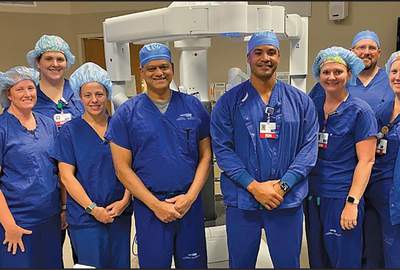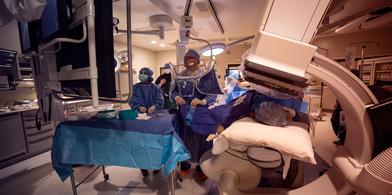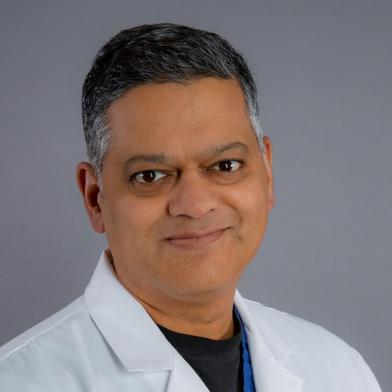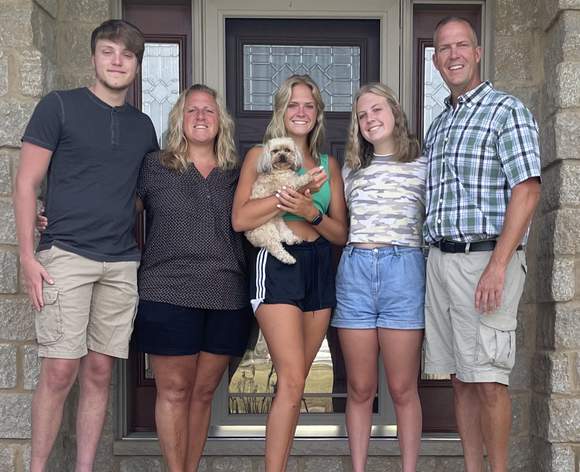
Jim Ludvigsen, far right, of Kenosha poses with his family. Ludvigsen is alive today because he was able to receive life-saving heart surgery at Froedtert South.
Jim Ludvigsen of Kenosha is a husband, the father of three, and, for the past 18 years, a fireman with the Kenosha Fire Department. One day while he was on duty at the fire station, something unexpected happened to Jim. “For some reason, my heart started racing,” he recalled. “My heart went into a-fib out of the blue.”
A-fib is short for atrial fibrillation – a very common cardiac condition in which stray electrical signals in the heart cause it to beat erratically. Jim’s a-fib initially went away on its own, but then reappeared a couple years later. Medications helped, but after his condition worsened, Jim decided to undergo a minimally-invasive procedure to block the unwanted electric signals causing his erratic heartbeats.
During Jim’s procedure, an unforeseen complication arose when blood began leaking from an abnormally thin and previously undetected patch of tissue on Jim’s heart. Fortunately, Jim was undergoing the procedure in the catheterization lab at Froedtert Pleasant Prairie Hospital, just steps away from the operating room where cardiothoracic surgeon Dr. Goya Raikar was preparing for heart surgery.
“We are just one hallway away from the cath lab,” Dr. Raikar said. “When the emergency situation arose, I rushed in there and we started doing CPR as we wheeled Jim back to our operating room.” Within minutes, Dr. Raikar and his team were able to perform open heart surgery and close the hole in Jim’s heart. After a few days recovering in the hospital, Jim went home. Today, he is back to work full time at the fire department. “We saved the life of a lifesaver who, as a first responder, has saved countless lives in the work that he does every day,” Dr. Raikar said.
“A friend of mine who is a heart surgeon told me what happened to me was very, very rare - maybe happening once every two or three years in the entire nation,” Jim said. “She also said I was lucky to be at a hospital that has what Froedtert South has: the right people, in the right place, at the right time. Other hospitals may not have those same resources available when and where they are needed in an emergency. Dr. Raikar and his team saved my life. My whole family is grateful,” Jim said.
“Because Jim was losing blood so quickly, he could not have been transported to another hospital in Milwaukee or Chicago for surgery,” Dr. Raikar said. “So, if we didn’t have all the people who make up what we call our total cardiac program at Froedtert South, Jim’s outcome could have been much different.”
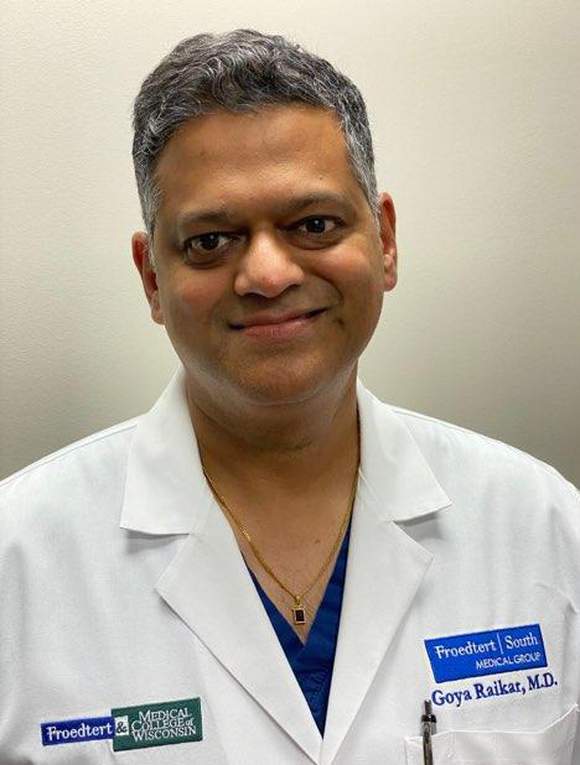
Goya Raikar, M.D.
A commitment to our community
“This level of comprehensive cardiac care at Froedtert South is no accident,” Dr. Raikar said. “It is the result of our commitment to understand what the community needs and make sure that we have the people and resources to meet those needs right here, close to home. That began three decades ago with the establishment of our Michael E. DeBakey Heart Institute, under the direction and guidance of the world-renowned pioneering heart surgeon, making us the only cardiac program other than the DeBakey Center in Houston to bear his name. That is quite an accomplishment in and of itself,” Dr. Raikar said.
“We provide access to specialists in emergency medicine, cardiology, electrophysiology, and cardiothoracic surgery, along with many other health care providers, all in the same place, 24 hours a day, seven days a week,” Dr. Raikar said. “If you have a heart emergency, we provide comprehensive cardiac care – from the emergency room, to the cath lab, to surgery – eliminating the need to transfer you to Milwaukee or Chicago. That is unique in the Kenosha County community.”
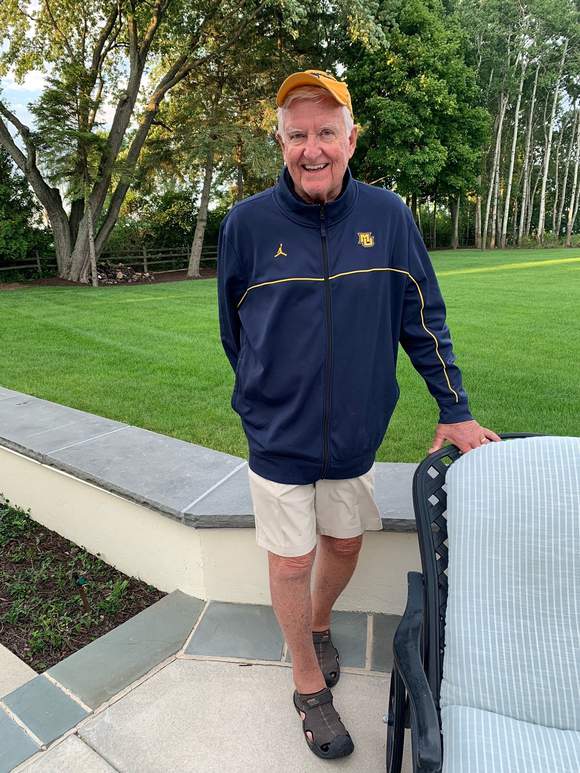
Robert “Buzz” Heller, a retired Kenosha periodontics practitioner, underwent a minimially invasive robotic assisted mitral valve repair surgery at Froedtert South.
A very different kind of heart surgery
“I have confidence in the doctors in Kenosha,” said Robert Heller, a retired Kenosha periodontics practitioner known as “Buzz” to his family and friends. “I am impressed that Froedtert South is doing new things, and doing them well,” Buzz said. “Good things happen in Kenosha.”
Buzz knows that from personal experience. Years ago, he was diagnosed with mitral valve prolapse – a condition in which one of his valves leaks blood back into his heart with every beat. When his condition worsened, Buzz’s primary care physician and cardiologist suggested he go see Dr. Raikar.
“I could see in Dr. Raikar’s eyes that he is an empathetic person,” Buzz said. “He is very intelligent and caring, and it shows in his work. I never thought for a moment about going anywhere else.”
Dr. Raikar recommended that Buzz undergo minimally invasive robotic assisted mitral valve repair surgery – a procedure that, in the entire state of Wisconsin, only he performs. “We have become a center for robotic assisted heart surgery in this region,” Dr. Raikar said. “Patients would have to go to Chicago or Mayo in Minnesota, where I trained, to find another surgeon who does what I have been doing for nearly my entire career as a surgeon.”
“Recovery from traditional open-heart surgery takes two or three months,” Dr. Raikar said. “For robotic assisted surgery, it is two or three weeks. That is a night and day difference. Buzz is a pillar in our community who was experiencing extreme fatigue as a result of his heart valve problem. Now, he is thankful to be active again.”
“I was out of the hospital and getting around in a couple days,” Buzz said. “I didn’t have any pain and didn’t require any narcotic pain relievers after I went home. I am doing fine, and have had several other physicians tell me how impressed they were with my rapid recovery.”
“With our hybrid approach to heart valve repair – combining the use of catheters with our surgical robots – we are seeing patients go home in as little as three days,” Dr. Raikar said. “And when our new hybrid operating room is completed this fall, it will enable us to bring multidisciplinary teams of interventional radiologists, cardiologists, and cardiovascular surgeons together with leading edge technologies to perform the breakthrough procedures that we alone will be able to provide for patients in the communities we serve.”
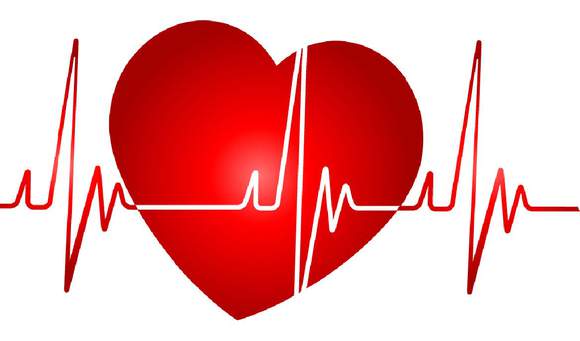
Comprehensive cancer, vascular care at Froedtert South
“We are also building a comprehensive lung cancer program, bringing together our pulmonology, medical oncology, and radiation oncology specialists to treat lung nodules,” Dr. Raikar said. “If someone has a spot on their lung, we have a whole comprehensive cancer team that works from biopsy through treatment, including robotically assisted surgery, and whatever a patient needs after surgery. We meet as an oncology tumor board every month to go over cases and collaborate on treatment options.”
“We also collaborate with our colleagues at Froedtert and the Medical College of Wisconsin,” Dr. Raikar said. “That gives us access to all the latest medical and radiation cancer treatments, including chemotherapy drug trials. Some patients may need to go Froedtert Hospital in Milwaukee for a specialized treatment, but 99 percent of the time, we can take care of patients here, close to home.”
“In addition, we have created a cardiovascular institute in which I coordinate with our cardiologists and interventional radiologists to perform aneurysm surgery or the insertion of stents, carotid artery surgery for stroke prevention, and what we call peripheral vascular surgery or interventions,” Dr. Raikar said.
“For example: a patient arrives in our emergency department with an abdominal aneurysm that is releasing blood clots to their legs,” Dr. Raikar said. “We will have an interventional radiologist take a three-dimensional CT scan of the aneurysm. Then, within minutes, we will have the patient in our hybrid suite where we’ll do an angiogram and cover the aneurysm with a stent to prevent it from leaking any more blood. If we need to do a bypass to save the patient’s leg, we can do that at the same time while we still have them in the hybrid operating room,” Dr. Raikar said.
“We are the only hospital in the community with the option to perform immediate surgery in these complex vascular cases,” Dr. Raikar said. “Some of the stents we are using in these procedures are typically only used at large hospitals in Milwaukee, Chicago, or other major cities. This is another level of expertise that we offer here, close to home.”
